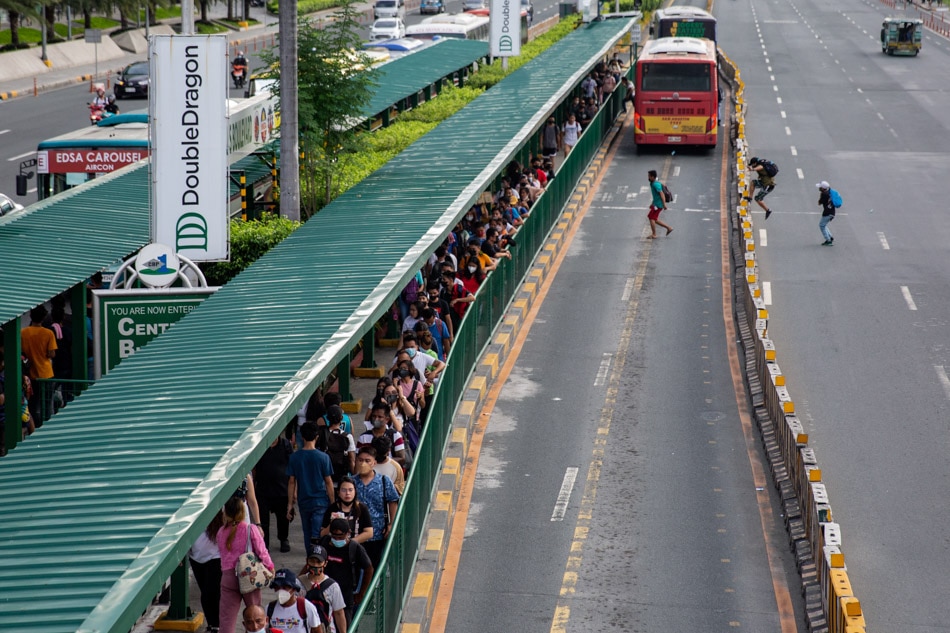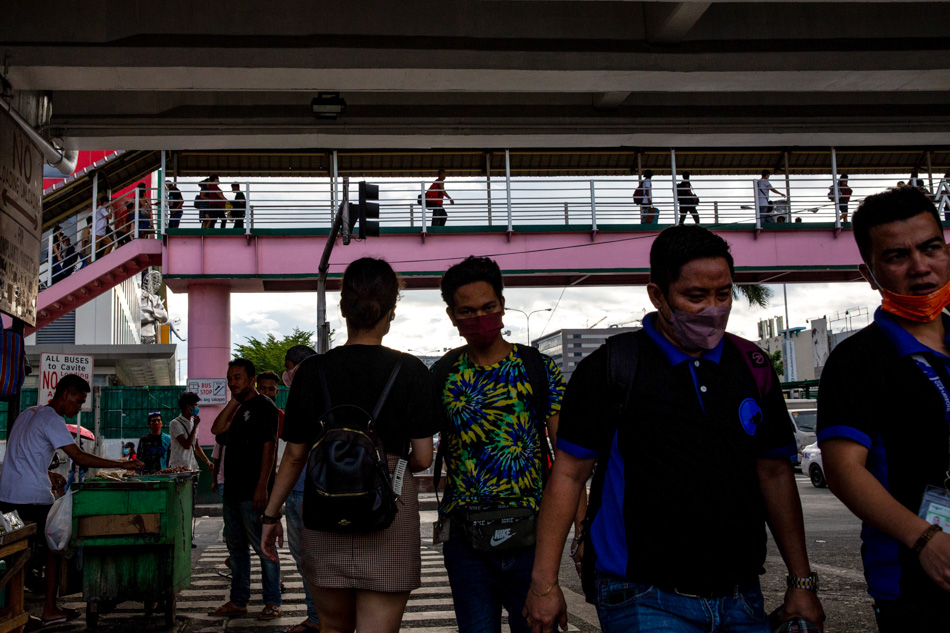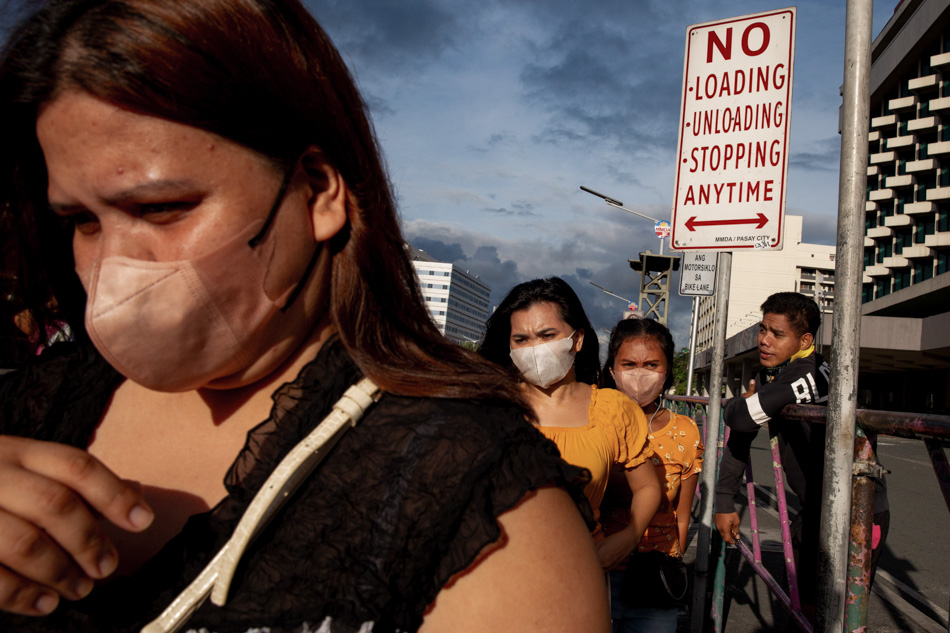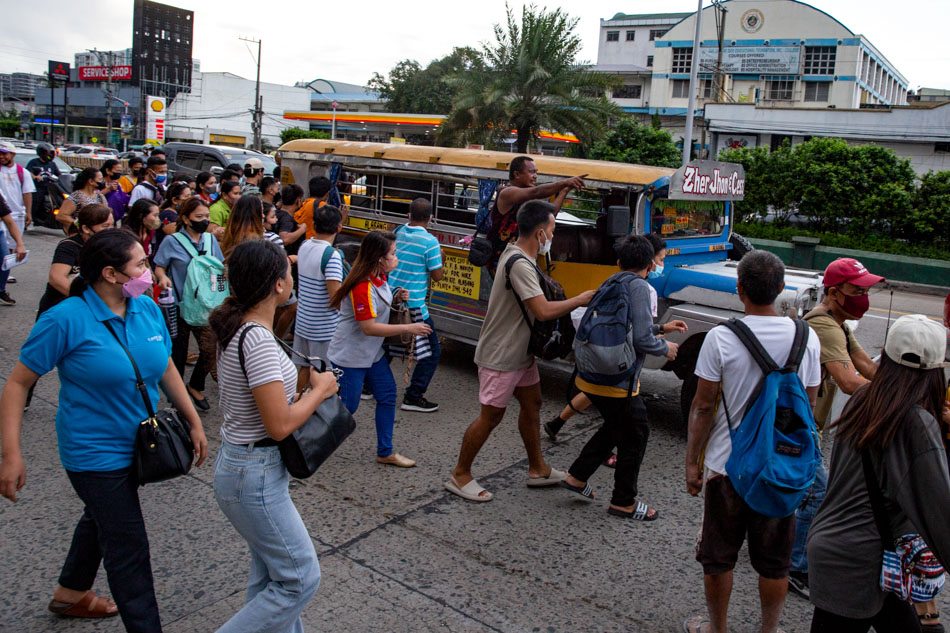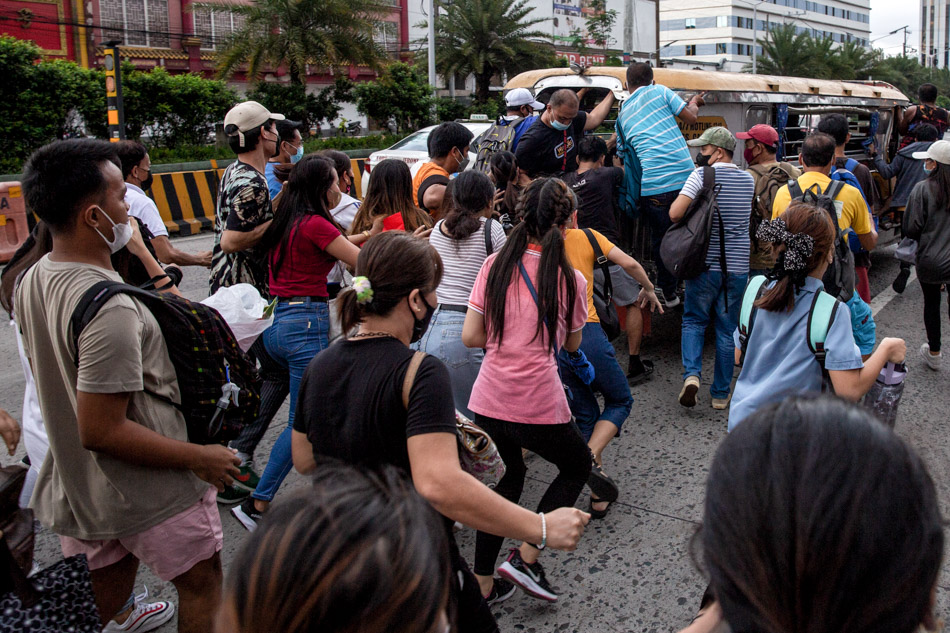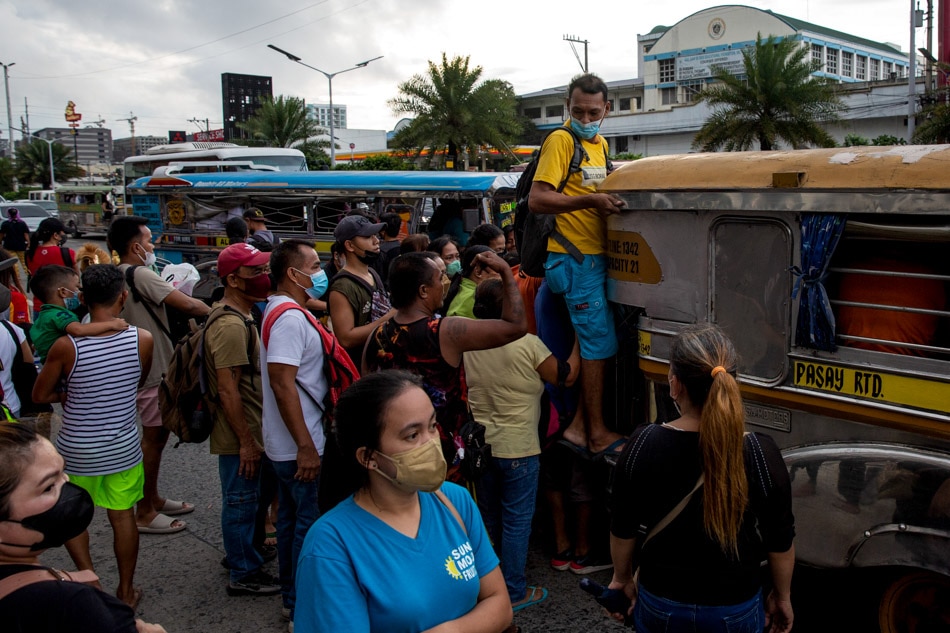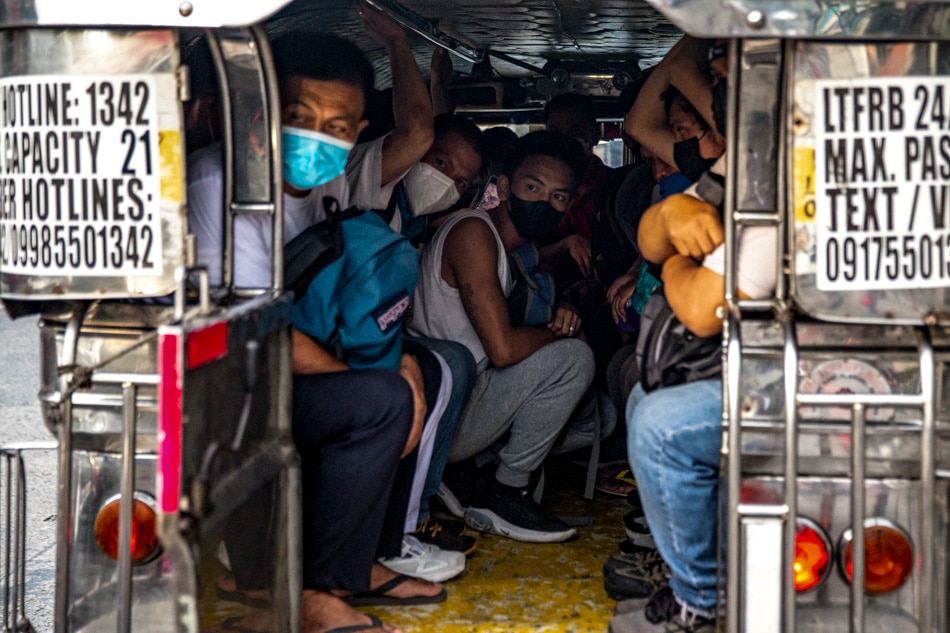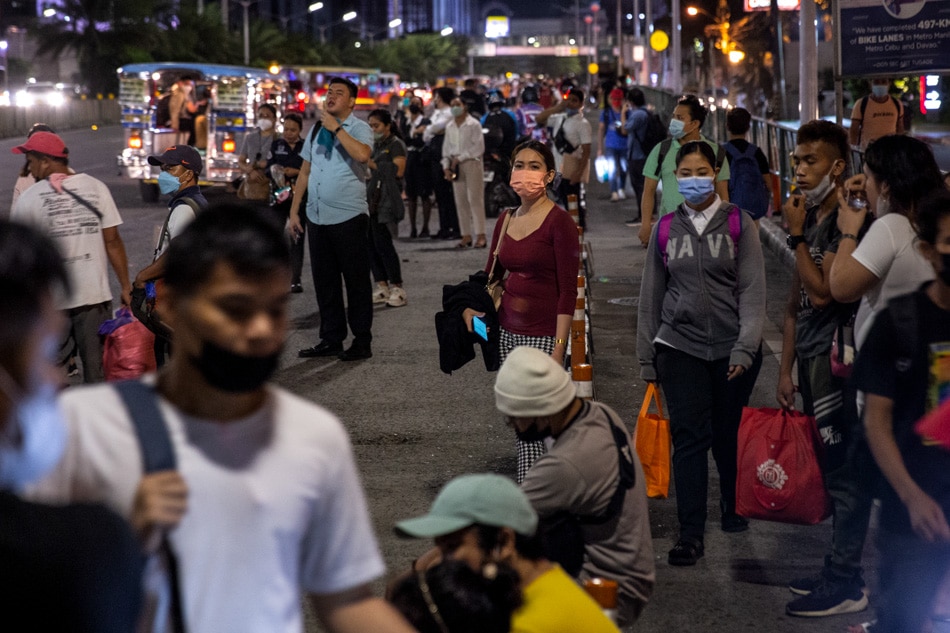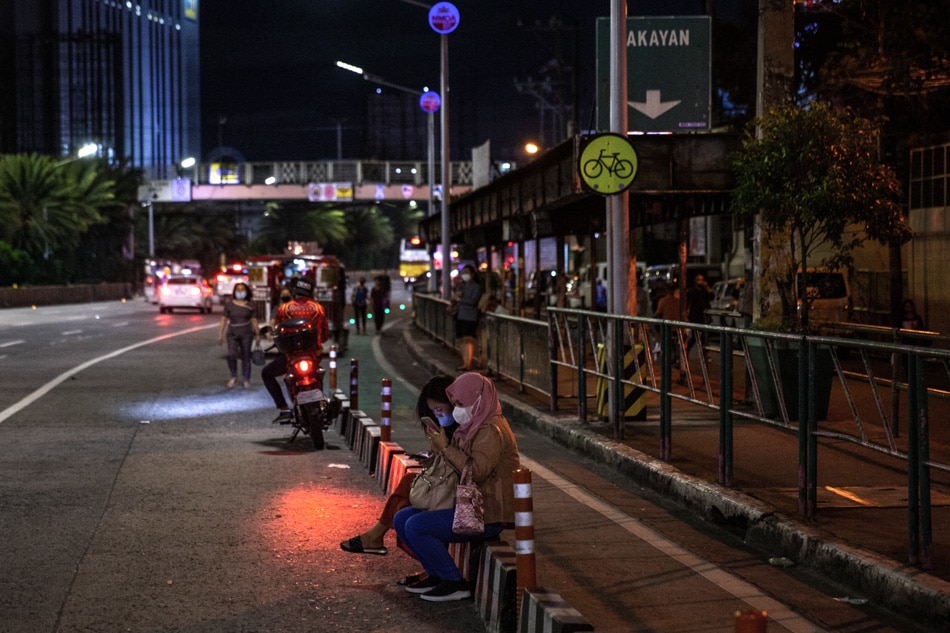A look at the daily travails of commuters
ADVERTISEMENT

Welcome, Kapamilya! We use cookies to improve your browsing experience. Continuing to use this site means you agree to our use of cookies. Tell me more!
A look at the daily travails of commuters
George Calvelo,
ABS-CBN News
Published Sep 15, 2022 03:27 PM PHT
Packed tightly into vehicles and forced to endure long lines for rides, commuters in Metro Manila offer an indication that the COVID-19 pandemic is waning and a return to normal could be starting.
Packed tightly into vehicles and forced to endure long lines for rides, commuters in Metro Manila offer an indication that the COVID-19 pandemic is waning and a return to normal could be starting.
As early as 4 p.m., an hour shy of the daily rush hour, a noticeable buildup of commuters occupy at least one lane of EDSA northbound at the intersection with Roxas Boulevard in Pasay City.
As early as 4 p.m., an hour shy of the daily rush hour, a noticeable buildup of commuters occupy at least one lane of EDSA northbound at the intersection with Roxas Boulevard in Pasay City.
Regardless of gender and age, passengers scuffle to hop on a still moving jeepney as it makes a u-turn from EDSA’s southbound lane, as rush hour nears. In this particular corner of Pasay City, where jeepneys ply further south to Parañaque City, commuters scramble for a seat on public utility vehicles.
Regardless of gender and age, passengers scuffle to hop on a still moving jeepney as it makes a u-turn from EDSA’s southbound lane, as rush hour nears. In this particular corner of Pasay City, where jeepneys ply further south to Parañaque City, commuters scramble for a seat on public utility vehicles.
A Japan International Cooperation Agency (JICA) study in 2018 said the daily gridlock costs the Philippines at least "P3.5 billion in lost opportunities." Another study in 2019, by TomTom Traffic Index, a worldwide traffic monitoring website, indicates the public loses over 10 days in a year to traffic in Metro Manila.
A Japan International Cooperation Agency (JICA) study in 2018 said the daily gridlock costs the Philippines at least "P3.5 billion in lost opportunities." Another study in 2019, by TomTom Traffic Index, a worldwide traffic monitoring website, indicates the public loses over 10 days in a year to traffic in Metro Manila.
ADVERTISEMENT
With work almost back to its pre-pandemic level and schools slowly returning to full face-to-face classes, the old traffic situation is rearing its ugly head again.
With work almost back to its pre-pandemic level and schools slowly returning to full face-to-face classes, the old traffic situation is rearing its ugly head again.
For some, the situation is disconcerting after 2 years of COVID-19 curbs that required social distancing and banned "sabit" or standing passengers.
For some, the situation is disconcerting after 2 years of COVID-19 curbs that required social distancing and banned "sabit" or standing passengers.
ADVERTISEMENT
ADVERTISEMENT



